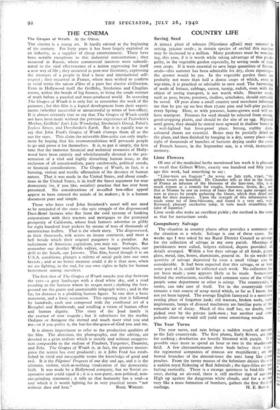COUNTRY LIFE
Saving Seed A SINGLE plant of tobacco (Nicotiana affinis) may succeed setting 350,000 seeds ; in Certain species of orchid this number may be increased to a million. Many gardeners must be wonder- ing, this year, if it is worth while taking advantage of this prodi- gality, in the vegetable garden especially, by saving seeds of their own crops. If it were essential to save large quantities of flower- seeds—this summer has been admirable for dry, dean ripening— the answer would be yes. In the vegetable garden there are probably not more than half a dozen crops of which, even in w4r-time, it is practical or advisable to save seed. The harvesting of seeds of lettuce, cabbage, carrot, turnip, radish, even with the object of saving transport, is not worth while. Heavier seeds, such as peas, beans, potatoes, shallots, artichokes, should certainly be saved. Of peas alone a small country seed merchant informed me that he put up no less than 17,000 pint and half-pint packets every Spring. Here, as with potatoes, home-grown seed will re- lieve trarfsport. Potatoes for seed should be selected from strong, good-cropping plants, and should be the size of an egg. Ripened until green, they should be stored nose upward in shallow boxes in a well-lighted but frost-proof place. Strong, stubby dark- coloured shoots are eisential. Beans may be partially dried on the plant, and then finished by hanging in a dry, sunny place—the sight of thousands of bunches of haricots drying under the eaves of French houses, in the September sun, is a vivid, instructive memory.






























 Previous page
Previous page